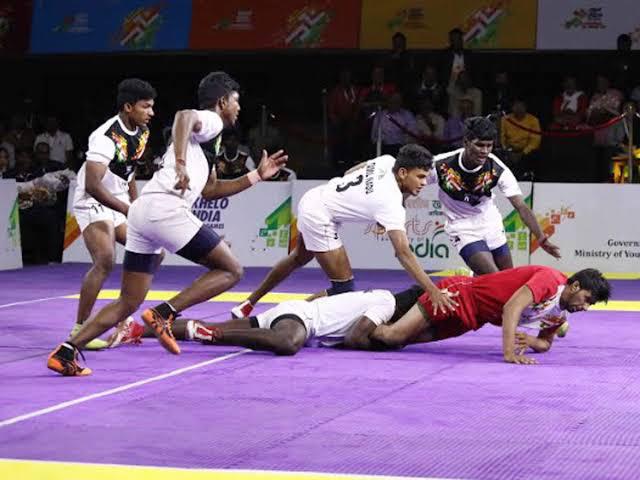Summary
Blood sugar refers to the amount of glucose circulating in your bloodstream. It comes mainly from carbohydrates in food, which are broken down into simple sugars during digestion.
Your body relies on insulin, a hormone produced by the pancreas, to move glucose from your blood into your cells for energy. When this process works efficiently, you feel alert, focused, and energized for daily activities like work and exercise. But when it is disrupted, your energy levels can spike and crash. Maintaining steady blood sugar helps you stay balanced, both mentally and physically, throughout the day.
This article breaks down what blood sugar is, how it works, and simple habits that can help keep it balanced throughout the day.
Why Blood Sugar Balance Matters
Stable blood sugar supports everything from mental focus to exercise performance. When levels fluctuate too much, you might feel tired, irritable, or find it hard to concentrate.
Chronic imbalance can also lead to long-term issues like insulin resistance, where cells stop responding well to insulin. Over time, this can affect metabolism, mood, and overall health.
Maintaining steady levels isn’t about avoiding sugar entirely, it’s about making smart food and lifestyle choices that promote consistency.
What Causes Blood Sugar Spikes and Drops
Your blood sugar levels change naturally throughout the day, but certain habits can make them swing more sharply.
Common causes of spikes:
Eating large amounts of refined carbohydrates or sugary foods
- Skipping meals and then overeating later
- High stress or lack of sleep
- Sedentary lifestyle or low physical activity
Common causes of drops:
- Going too long without eating
- Overtraining without enough fuel
- Drinking excessive caffeine without meals
- Sudden calorie restriction
Understanding these triggers helps you plan better and manage your energy more effectively.
How To Maintain Healthy Blood Sugar Levels
1) Eat Balanced Meals
Combine carbohydrates with protein and healthy fats. This slows digestion and helps glucose enter the bloodstream more gradually.
2) Prioritize Whole Foods
Choose fruits, vegetables, whole grains, and lean proteins. These contain fiber, which improves digestion and stabilizes sugar absorption.
3) Move Regularly
Physical activity helps your body use glucose more efficiently. Even a short walk after meals can help regulate levels.
4) Stay Hydrated
Water, one of our most important daily need supports digestion and helps your kidneys flush out excess sugar.
5) Manage Stress
Stress hormones like cortisol can raise blood sugar levels. Activities like deep breathing, meditation, or light exercise help maintain balance.
6) Get Enough Sleep
Poor sleep can disrupt insulin function. Aim for consistent rest to keep hormones and energy steady.
How Exercise Affects Blood Sugar

Exercise plays a major role in blood sugar regulation. During workouts, your muscles use stored glucose for fuel, lowering the amount in your bloodstream.
Consistent training also makes your cells more sensitive to insulin, meaning your body can process glucose more effectively over time. Both aerobic exercise like jogging and strength training help improve long-term blood sugar control.
Signs of Blood Sugar Imbalance
You might notice these signs when your levels are unstable:
- Sudden fatigue after eating
- Difficulty focusing or mood swings
- Feeling shaky or light-headed
- Craving sweets frequently
- Trouble sleeping or staying energized through the day
If these happen often, it may help to monitor eating habits and meal timing to identify patterns.
FAQs About Blood Sugar And How It Affects Our Health
Q: What Is A Normal Blood Sugar Level?
A: For most healthy adults, fasting blood sugar levels range between 70 to 100 mg/dL.
Q: How Can I Tell If My Blood Sugar Is Too High Or Low?
A: Common signs of high blood sugar include thirst and fatigue, while low blood sugar may cause dizziness, hunger, or shakiness.
Q: Does Exercise Lower Blood Sugar?
A: Yes. Physical activity helps your body use glucose for energy, improving overall balance.
Q: Is It Bad To Eat Carbs If I Want Steady Blood Sugar?
A: Not at all. Choose complex carbs like oats, brown rice, and vegetables for longer-lasting energy.
Q: How Often Should I Eat To Keep Blood Sugar Stable?
A: That depends on your activity level. Most people benefit from regular, balanced meals every 3–5 hours.
Final Thoughts
Blood sugar balance is the foundation of lasting energy and wellbeing. When you understand how it works, you can make small adjustments that create big results, from steady focus at work to better performance during training.
By staying active, eating balanced meals, and resting well, you help your body find its natural rhythm. Consistency, not perfection, is what keeps your energy steady day after day.
You may also like:
Should You Eat Several Small Meals Or A Few Large Ones?
Summary Metabolism refers to all the chemical processes that keep your body functioning. It turns the food you eat into energy for movement, training, repair, and daily living. A faster metabolism burns more energy, while…
Summary Diet trends often come and go, but one debate that continues is meal frequency. Some people swear by eating every few hours to “keep metabolism high,” while others prefer two or three bigger meals…
Summary There’s something powerful about waking up before the world does. The streets are quieter, the air feels lighter, and your mind hasn’t yet been flooded by daily distractions. Training in the morning taps into…
Summary Eating healthy doesn’t have to mean giving up your favorite foods or surviving on bland salads. With the right balance of nutrients and flavor, you can enjoy satisfying lunches that help you stay full,…
Summary Strength and conditioning exercises are used to strengthen your muscles and joints, improving your mobility. We all move around the place as we complete our day-to-day obligations, so we all can benefit from making…
Summary Over the last few years, a remarkable shift has been happening in the world of television and fitness. Reality competition shows built around extreme physical challenges are no longer niche, they’re becoming mass-market phenomena….
Summary In Brazilian Jiu-Jitsu, a trip is a standing technique used to unbalance (Kuzushi) your opponent and take them down by targeting their legs. Unlike powerful judo throws that lift or launch an opponent, trips…
Summary In Muay Thai, knees are used from close to mid range and are one of Muay Thai’s most devastating weapons. They can stop an opponent’s forward pressure, drain their stamina, or end a fight…
Summary The L step is a movement pattern where you step diagonally backward and to the side, forming a “L” shape movement. It allows you to move off the centerline and create angles while maintaining…
Summary There isn’t a single “best” martial art, only the one that suits you best. Whether you want to get fitter, learn self-defense, or explore something new, each discipline offers its own set of benefits….
Summary Singapore’s fitness landscape is evolving faster than ever. From high-intensity race formats to group circuits and skill-based training, more people are asking not just how to get fit but what kind of fit they…
Summary A breakfall, known as ‘ukemi’ in Japanese martial arts, is one of the first techniques students learn in Brazilian Jiu-Jitsu. Instead of resisting a fall, you guide your body toward the mat and use…




![[WATCH] Virat Kohli opens up on fondness for Chinnaswamy Stadium](https://lbsports88.com/wp-content/uploads/2025/11/watch-virat-kohli-opens-up-on-fondness-for-chinnaswamy-stadium-360x180.jpg)































